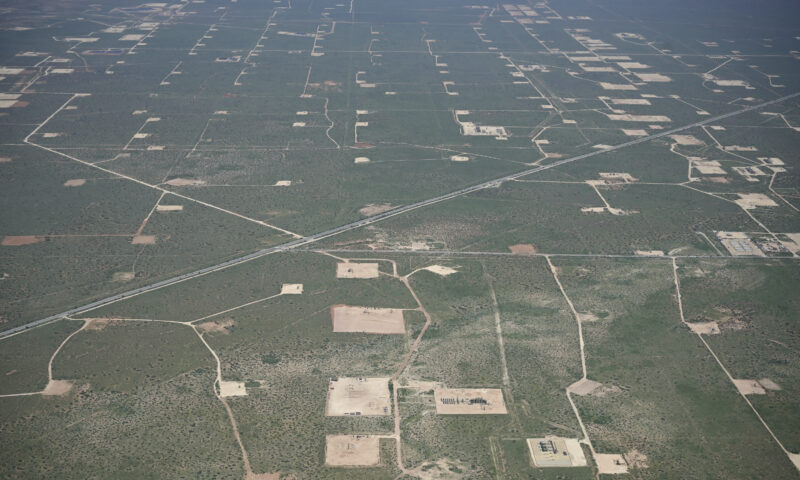Latest News
Beyond Justice: A Talk With Black Lives Matter’s Melina Abdullah
A co-founder of the activist organization’s Los Angeles chapter explains the distance between Trayvon Martin and George Floyd.

Melina Abdullah is the co-founder of Black Lives Matter’s Los Angeles chapter and a professor and former chair of Pan-African Studies at Cal State L.A. The group has been a principal organizer of the protests in the days following the death of George Floyd while in the custody of the Minneapolis Police Department. This interview has been edited for length and clarity.
Capital & Main: You have described what’s happening here and across the country in the wake of the George Floyd murder as pivotal–a rebellion, an uprising, a revolt. That’s optimistic.
Melina Abdullah: It feels different than anything I’ve ever been in the midst of. There’s tragedy but there’s also tremendous hope. This is rooted in black rage. It’s the center of the movement; it’s driving the direction of the movement. But this 2020 moment is different because lessons have been learned—BLM knows how to organize. Back in 2013,when we first started after the acquittal of George Zimmerman in the murder of Trayvon Martin, we were building the plane as we were trying to fly. Now we have a complete fleet of planes.
‘White people understand that they don’t get to say they aren’t racist because their grandfather wasn’t in the KKK.’
Why are the demonstrations happening in largely white, more affluent neighborhoods here?
It’s deliberate. We’ve done that from the beginning. The day George Zimmerman was acquitted, we all went to Leimert Park. That’s where everybody black went when something happened; you didn’t need a Facebook post. People were milling around, hugging each other. Then we decided to march. I had a debate with another organizer who wanted to march south down Crenshaw Boulevard. I was holding a bullhorn, and I yelled into it, ‘Go north!’ If you go south into black neighborhoods, nobody cares what you do. If you go north into whiter, more affluent neighborhoods, they do. The first BLM planned protest was actually along Wilshire and we ended up at Rodeo Drive. All the white folks watching who were wining and dining in Beverly Hills were shocked. I don’t think the police knew what to do at all.
So how has that initial shock of white people being confronted with black protest shifted?
The movement is still black-led but things have changed. White people have been awakened. They understand that they don’t get to say they aren’t racist because their grandfather wasn’t in the KKK. I want to credit organizations like White People 4 Black Lives and other allies for being part of that awakening.
‘Mayor Garcetti makes sympathetic statements but he is terrible when it comes to actions.’
What about Trump? How do you fulfill this hopeful moment when our national leadership is so patently racist, and so anti-protest?
I don’t even know what to say about Trump, other than the fact that he needs to resign. As for Trumpism, I believe racist resistance will fall, but not without a fight. It’s good that so many white mainstream people and even businesses are making sympathetic statements about black lives mattering, about the reality of white supremacy. The real question is, what will they do?
We can act like liberal white supremacy is the answer to Trump. It’s not. Mayor Garcetti makes sympathetic statements too, but he is terrible when it comes to actions. He has not been good on police reform. He likes to tell us he was in Ethiopia when he was in the Peace Corps, and that Ben Jealous [former president of the national NAACP] was his roommate once. It’s important to look not just at somebody’s profile, but their policy. Garcetti is on [the] opposite side of defunding police, for example. Trump is talking about calling in military, but Garcetti has already brought in the National Guard –we’ve seen them rolling through Crenshaw, parts of the city where there’s no protest activity at all.
‘LAPD shot [actor] Kendrick Sampson with rubber bullets seven times and beat up his friend and sent him to the hospital.
The press isn’t covering this.’
What was your initial reaction to the George Floyd video?
It was one of the most terrible cases we’ve ever seen, the most horrific. The reason it’s hitting folks so harshly is that the officer who killed Floyd had 10 minutes to make a different choice. When you watched it, you could see the whole history of slave catching in [Derek Chauvin’s] face. He looked like he was saying, “I have the power to steal your life and there’s nothing you can do about it.” In broad daylight. Even charging the other three officers who stood by and watched won’t be enough. This is about much more than George Floyd. The danger is that we follow the case of these policemen and then go home when the case is over. I hope people won’t fall for that.
Much of the reporting has focused on the looting, the vandalism, the violence in the streets. You have a very clear opinion about that.
The looting is not as violent as the police violence that is the source of the protesting. Focusing on broken windows is a deliberate decision. Why aren’t media focused more on the brutal reaction by cops to protesters? During our first protest last Wednesday we wound up taking over the 101 Freeway downtown. A CHP [California Highway Patrol] cruiser plowed into our group of protesters; one of us was seriously hurt but was left for dead [he ended up getting to a hospital].
Last Saturday I was out protesting with BLM, in a group which included the actor Kendrick Sampson. LAPD shot Kendrick with rubber bullets seven times and beat up his friend and sent him to the hospital. The press isn’t covering this. I’ve watched news cameras turn away when things started to get brutal. After a week that’s changing a bit.
What’s the organizational plan now? Will protests continue for the foreseeable future?
We’re taking this day by day. BLM has been around seven years now; we’re not going anywhere. There’s protest, and there’s policy. Before this moment we had started to build momentum for the People’s Budget for the city [a BLM-backed initiative that calls for defunding police and redirecting resources]. We will build more.
Editor’s Note: Since this interview was conducted, Mayor Garcetti has announced his support for cutting a substantial amount of the city’s police budget and reallocating it toward social needs.
Copyright 2020 Capital & Main

-

 Latest NewsDecember 8, 2025
Latest NewsDecember 8, 2025This L.A. Museum Is Standing Up to Trump’s Whitewashing, Vowing to ‘Scrub Nothing’
-

 Striking BackDecember 4, 2025
Striking BackDecember 4, 2025Home Care Workers Are Losing Minimum Wage Protections — and Fighting Back
-

 The SlickDecember 2, 2025
The SlickDecember 2, 2025Utility Asks New Mexico for ‘Zero Emission’ Status for Gas-Fired Power Plant
-

 Dirty MoneyDecember 3, 2025
Dirty MoneyDecember 3, 2025Trump’s Anti-Climate Policies Are Driving Up Insurance Costs for Homeowners, Say Experts
-

 Child FarmworkersDecember 5, 2025
Child FarmworkersDecember 5, 2025To Protect Underage Farmworkers, California Expands Oversight of Field Conditions
-

 Column - State of InequalityDecember 4, 2025
Column - State of InequalityDecember 4, 2025Can California Claw Back Some Medi-Cal Care?
-

 Latest NewsDecember 10, 2025
Latest NewsDecember 10, 2025Capital & Main, L.A. Times Win Sidney Award for Reporting on Child Farmworkers
-

 StrandedDecember 9, 2025
StrandedDecember 9, 2025Giving Up on the Dream: Asylum Seekers Try Other Options in Mexico

